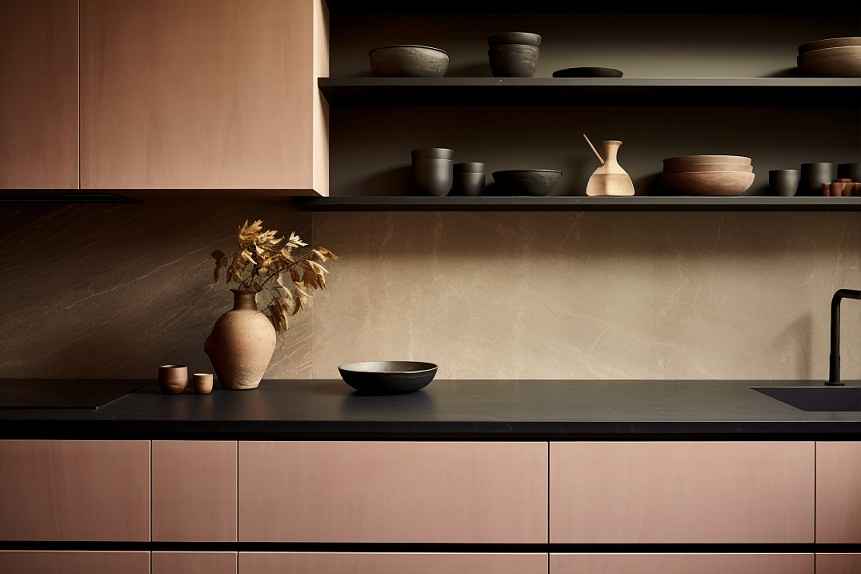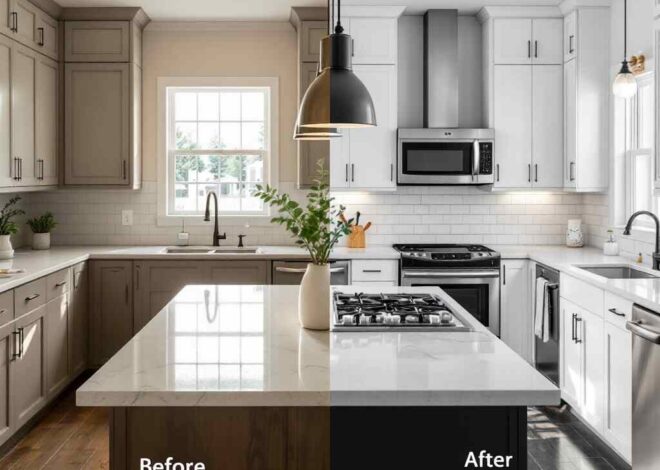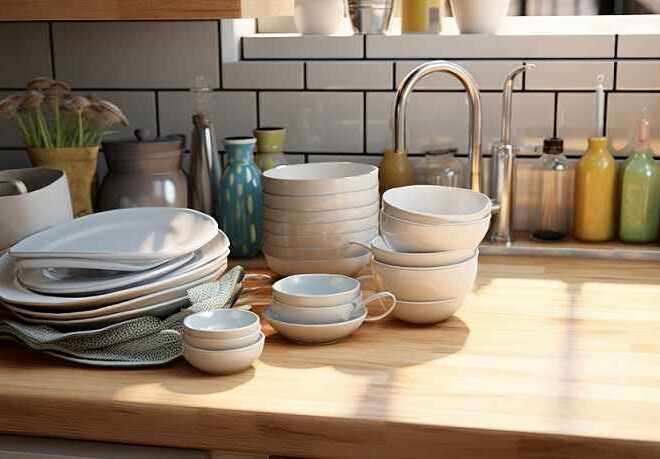
Measuring Up: How Deep Are Standard Kitchen Counters?
Welcome to the heart of your home—the kitchen! It’s where culinary magic happens, dinner parties come alive, and family memories are made. But have you ever stopped to consider how the height of your kitchen counters impacts all this? Whether you’re whipping up a weekday meal or hosting a gourmet feast, the depth and height of those countertops can make all the difference in comfort and functionality. In our latest blog post, “Measuring Up: How Deep Are Standard Kitchen Counters?”, we’ll dive into the essential measurements that shape your cooking experience. Get ready for some eye-opening insights that will help you maximize space, boost efficiency, and create a kitchen that’s truly tailored to your needs! Let’s explore what makes those surfaces work perfectly for everyone—from tall chefs to little helpers—and why getting it right is crucial for culinary success!
Introduction to Kitchen Counters
When it comes to kitchen design, the counter is more than just a flat surface. It’s where culinary magic happens, family meals are prepared, and social gatherings unfold. Yet, many homeowners overlook an essential aspect: the depth of their kitchen counters. Understanding standard measurements can make all the difference in both functionality and aesthetics. Whether you’re planning a renovation or simply curious about your current setup, knowing how deep kitchen counters should be is key to creating an efficient space that meets your needs. Let’s dive into everything you need to know about this vital component of your home!
Standard Measurements for Kitchen Counters
When designing your kitchen, one crucial aspect is the depth of your counters. Standard kitchen counters typically measure 24 inches deep. This depth provides ample space for food preparation and everyday cooking tasks.
The height of these counters is generally around 36 inches, making them accessible and comfortable for most users.
While 24 inches is common, some homeowners opt for deeper countertops in their designs, particularly when incorporating features like breakfast bars or islands.
These variations allow for more versatility in layout and style but should be chosen carefully to maintain functionality.
Understanding these standard measurements helps you create a well-planned kitchen that meets both aesthetic desires and practical needs.
Factors That Affect Counter Depth
When considering kitchen counters, several factors come into play regarding their depth. One of the primary influences is the layout of your kitchen. Open-plan spaces might require deeper counters for better workflow and accessibility.
Another important aspect is the appliances you use. If you have large mixers or cookers that need additional clearance, you may want to opt for a greater counter depth to accommodate them comfortably.
User height also plays a significant role in determining how deep your countertops should be. Taller individuals often prefer more substantial depths to ensure an ergonomic workspace.
Lastly, personal style preferences can’t be overlooked. Some homeowners gravitate toward bolder designs that feature deeper surfaces, enhancing both aesthetics and functionality in their culinary space. Each factor contributes uniquely to creating the perfect kitchen environment suited just for you.
How to Measure the Depth of Your Kitchen Counter
Measuring the depth of your kitchen counter is a simple task that requires just a few tools. Grab a tape measure and ensure it’s straight for accuracy.
Start at the wall where your countertop meets it. Stretch the tape to the front edge of your counter, making sure not to pull too tightly. Record this measurement in inches or centimeters, depending on what you prefer.
If you’re dealing with an island or peninsula, take multiple measurements across different sections. This helps account for any variations in design.
Make sure to check if there are overhangs too; they can affect how much usable space you have. Knowing these details will help in planning renovations or adding new appliances effectively without compromising functionality.
Common Variations in Counter Depth
When it comes to kitchen counters, depth isn’t one-size-fits-all. Standard counters typically measure 24 inches deep, but variations do exist.
For instance, deeper countertops measuring up to 30 inches can accommodate larger appliances or provide extra workspace for avid cooks. These are often found in professional kitchens where functionality is key.
Conversely, some designs feature shallower counters at around 20 inches. This option may suit smaller spaces or minimalist aesthetics well.
There’s also the trend of overhanging countertops that extend past standard depths. These create a casual dining space while enhancing overall style and function.
It’s essential to consider how these variations affect your kitchen layout and flow before committing to a specific depth.
Choosing the Right Depth for Your Needs
Choosing the right depth for your kitchen counters is essential to ensure functionality and comfort. Consider your cooking habits first. If you frequently prepare large meals, a deeper counter may offer more workspace.
Next, think about your height. Taller individuals might benefit from slightly deeper countertops that can accommodate their reach without strain. Conversely, if you’re on the shorter side, a standard depth could be ideal.
Also, take into account appliances or features like overhangs for seating areas. A deeper counter can provide extra room for guests while maintaining an aesthetic appeal.
Lastly, consider storage needs too. A countertop with sufficient depth allows you to incorporate under-counter shelves or cabinets seamlessly without sacrificing style or space efficiency.
Creative Ways to Maximize Counter Space
Maximizing counter space can transform your kitchen into a more functional and enjoyable area. One effective method is to utilize vertical storage solutions. Wall-mounted shelves or pegboards can hold spices, utensils, or even small pots.
Consider adding tiered organizers for items like canned goods or baking supplies. This approach keeps everything visible and accessible without cluttering the surface.
Incorporating pull-out drawers within cabinets also helps make use of hidden spaces. They provide easy access to frequently used items while keeping surfaces clear.
Another creative idea is using magnetic strips for knives and metal tools. This not only saves room but adds an aesthetic touch to your kitchen decor.
Lastly, think about multi-functional furniture, such as a butcher block with built-in storage underneath. These additions can enhance both style and practicality in any culinary setting.
Conclusion
When selecting kitchen counters, understanding their depth is crucial. Standard kitchen counter measurements typically range from 24 to 26 inches deep. However, this can vary based on design preferences and specific needs.
Factors like the layout of your kitchen, appliance sizes, and personal cooking habits all influence how deep your counters should be. Measuring accurately ensures you make the right choice for functionality and aesthetics.
If you’re considering a remodel or new installation, take time to assess common variations in counter depths available on the market. Some styles may cater better to certain tasks or spaces than others.
Choosing the right depth not only enhances usability but also allows for creative solutions to maximize space. Whether it’s through incorporating islands or extending countertops into dining areas, think about how every inch counts in your culinary haven.
Making informed decisions leads to a satisfying kitchen environment that reflects both practicality and style. Understanding these elements will help ensure that your kitchen counters serve you well for years to come.


